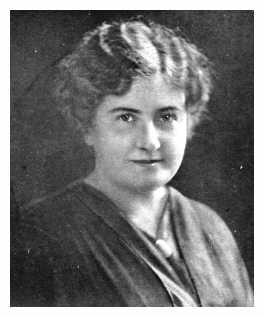 Maria Montessori and education. First, the education of the senses, then the education of the intellect – Montessori’s vision and ‘method’ are still popular.
Maria Montessori and education. First, the education of the senses, then the education of the intellect – Montessori’s vision and ‘method’ are still popular.
Maria Montessori (1870 – 1952). Maria Montessori was the first woman in Italy to qualify as a physician. She developed an interest in the diseases of children and in the needs of those said to be ‘ineducable’ In the case of the latter she argued for the development of training for teachers along Froebelian lines (she also drew on Rousseau and Pestalozzi) and developed the principle that was also to inform her general educational programme: first the education of the senses, then the education of the intellect. Maria Montessori developed a teaching programme that enabled ‘defective’ children to read and write. She sought to teach skills not by having children repeatedly try it, but by developing exercises that prepare them. These exercises would then be repeated: Looking becomes reading; touching becomes writing. (See The Montessoria Method).
The success of her method then caused her to ask questions of ‘normal’ education and the ways in which failed children. Maria Montessori had the chance to test her programme and ideas with the establishment of the first Casa dei Bambini (Children’s house or household) in Rome in 1907. (This house had been built as part of a slum redevelopment). This house and those that followed were designed to provide a good environment for children to live and learn. An emphasis was placed on self-determination and self-realization. This entailed developing a concern for others and discipline and to do this children engaged in exercices de la vie pratique (exercise in daily living). These and other exercises were to function like a ladder – allowing the child to pick up the challenge and to judge their progress. ‘The essential thing is for the task to arouse such an interest that it engages the child’s whole personality’ (Maria Montessori – The Absorbent Mind: 206).
This connected with a further element in the Montessori programme – decentring the teacher. The teacher was the ‘keeper’ of the environment. While children got on with their activities the task was to observe and to intervene from the periphery. (Here there are a number of parallels with Dewey).
The focus on self-realization through independent activity, the concern with attitude, and the focus on the educator as the keeper of the environment (and making use of their scientific powers of observation and reflection) – all have some echo in the work of informal educators. However, it is Maria Montessori’s notion of the Children’s House as a stimulating environment in which participants can learn to take responsibility that has a particular resonance.
Further reading and references
Montessori, M. (1916) The Montessoria Method, New York: Schocken Books (1964 edition). Usually seen as the classic statement of her approach. Contents examine the new pedagogy, the pedagogical methods of the ‘Children’s House’, methods, discipline, sequencing etc.
Montessori, M. (1949) The Absorbent Mind, New York: Dell (1967 edn.)
Biographical material: The standard work in English is:
Kramer, R. (1978) Maria Montessori, Oxford: Blackwell.
Acknowledgement: Opening image – Frise chronologique sur Maria Montessori by Nelly Coroir, Wikimedia Commons – ccabysa4 licence. The picture of Maria Montessori is as it appeared on the front cover of her book The Montessori Method, published in 1916, in Dutch, in Amsterdam. It is believed to be in the public domain because copyright has expired. See Wikipedia Commons
© Mark K. Smith 1997.

 Maria Montessori and education. First, the education of the senses, then the education of the intellect – Montessori’s vision and ‘method’ are still popular.
Maria Montessori and education. First, the education of the senses, then the education of the intellect – Montessori’s vision and ‘method’ are still popular.